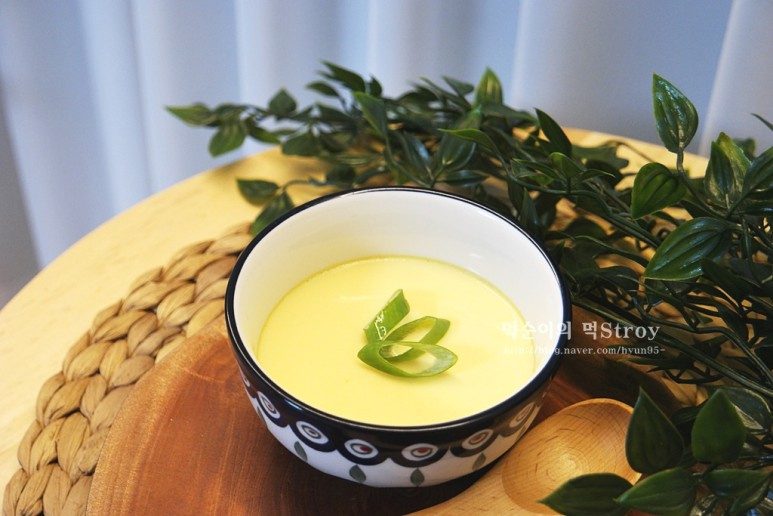Silken Japanese Steamed Egg Custard (Chawanmushi)
Wobbly, Pudding-Like Texture! Homemade Japanese Steamed Egg Custard

Experience the melt-in-your-mouth, pudding-like tenderness with this Chawanmushi recipe. This Japanese steamed egg custard is a comforting dish that will make any meal feel special. Learn how to easily recreate this delicate delicacy at home.
Ingredients- 2 fresh eggs
- 200ml warm dashi broth (or bonito flake broth)
- 1 Tbsp mirin (to remove gaminess and enhance flavor)
- 1 pinch of salt (adjust to taste)
- A few thin slices of green onion for garnish
Cooking Instructions
Step 1
First, prepare the broth, which is key to a silky smooth custard. You can use a savory broth made by simmering anchovies and kelp, or a clear broth made by steeping bonito flakes in hot water for about 5 minutes. For a quicker option, dilute about 1/3 cup of concentrated dashi stock (like mentsuyu) with water.

Step 2
Crack 2 fresh eggs into a bowl. Add a small pinch of salt; Japanese custards are typically not heavily seasoned to highlight the natural flavors. Stir in 1 tablespoon of mirin to reduce any eggy smell and add a subtle sweetness.

Step 3
Gently whisk the eggs until just combined. Slowly pour in the 200ml of warm broth while stirring gently to avoid creating too many bubbles. Mix everything together smoothly.

Step 4
For that ultimate pudding-like, silky texture, this straining step is crucial. Strain the egg and broth mixture through a fine-mesh sieve 1-2 times. This removes any chalazae (the white stringy bits) or unincorporated egg whites, ensuring a smooth, velvety custard without any lumps.

Step 5
Now, prepare your heatproof serving bowls. If serving individually, fill each bowl no more than two-thirds full. Roughly, one egg’s worth of mixture fills about two-thirds of a standard rice bowl.

Step 6
Place a steaming rack or trivet inside a larger pot. Add water to the pot, ensuring the water level is about 1-2 cm below the rack so it doesn’t touch the bottom of the custard bowls. Using ceramic bowls is recommended as they conduct heat evenly, contributing to a gentle cooking process.

Step 7
Carefully place the custard bowls onto the rack in the pot. It is very important to cover the top of each individual custard bowl with a lid, plastic wrap, or aluminum foil. This creates a sealed environment, preventing steam from entering the custard and making it watery, thus preserving its delicate texture.

Step 8
Cover the larger pot with its lid and turn the heat to medium. Steam for about 15 minutes. The timing starts *after* you cover the pot with the lid. Let the water come to a simmer over medium heat for the first 5 minutes, then reduce to low heat for the remaining time. The custard is done when a skewer inserted comes out clean. If the water starts boiling vigorously, reduce the heat to medium-low.

Step 9
After 15 minutes of steaming, carefully remove the hot bowls using oven mitts or pot holders. Garnish with the thinly sliced green onions. For added color and flavor, you can also decorate with cocktail shrimp, ginkgo nuts, hard-boiled egg slices, or thinly sliced red chili peppers.



